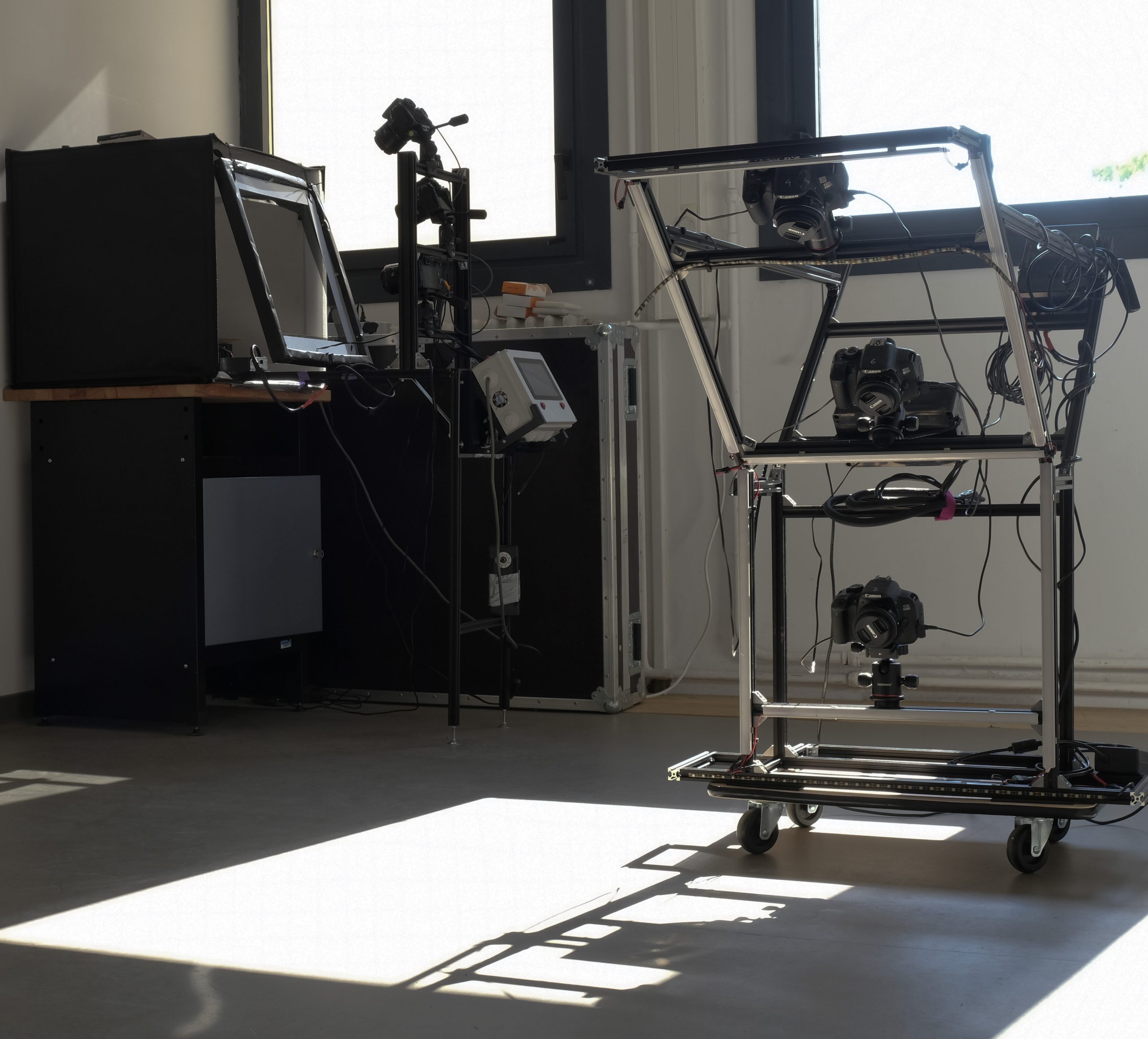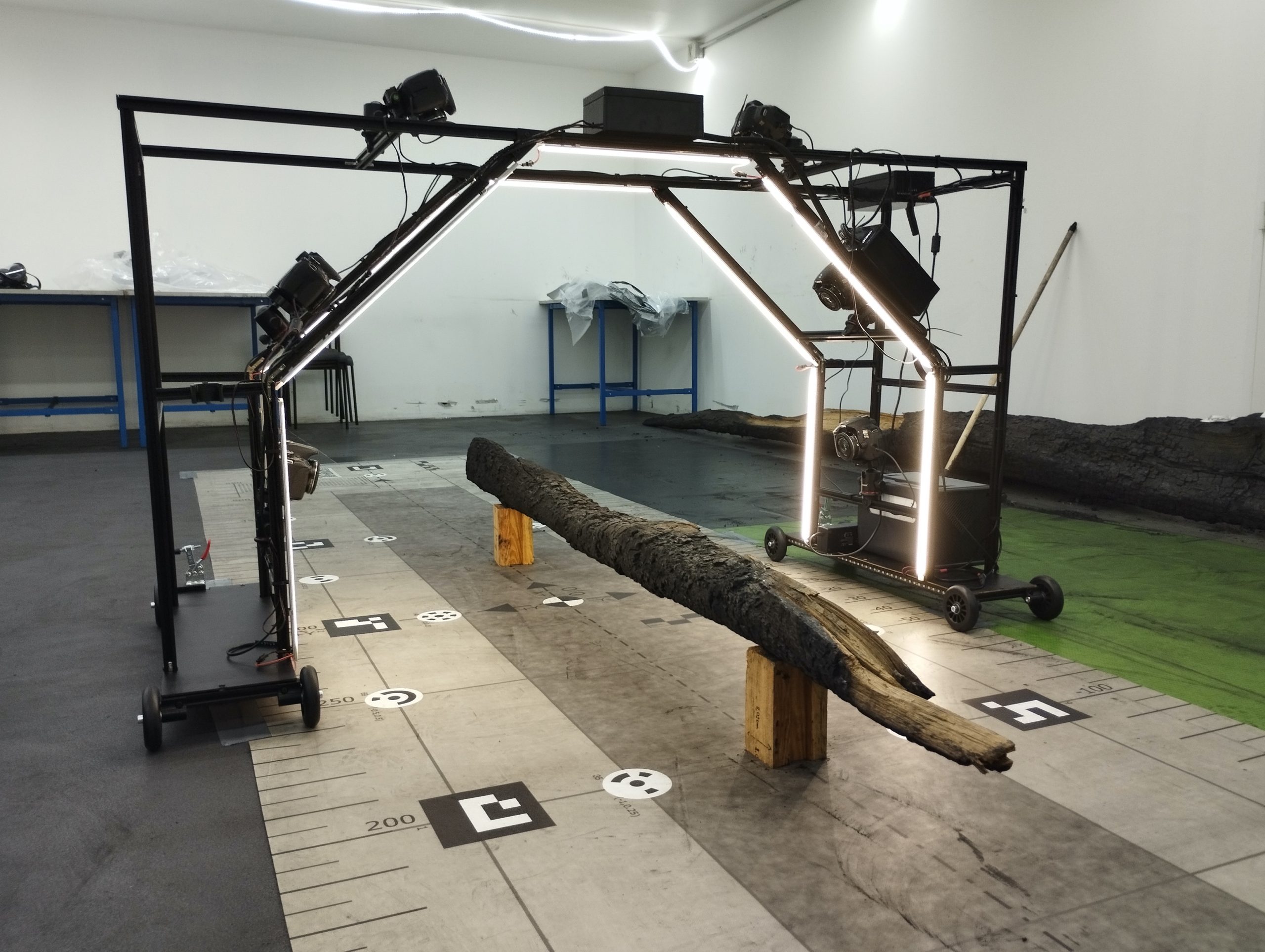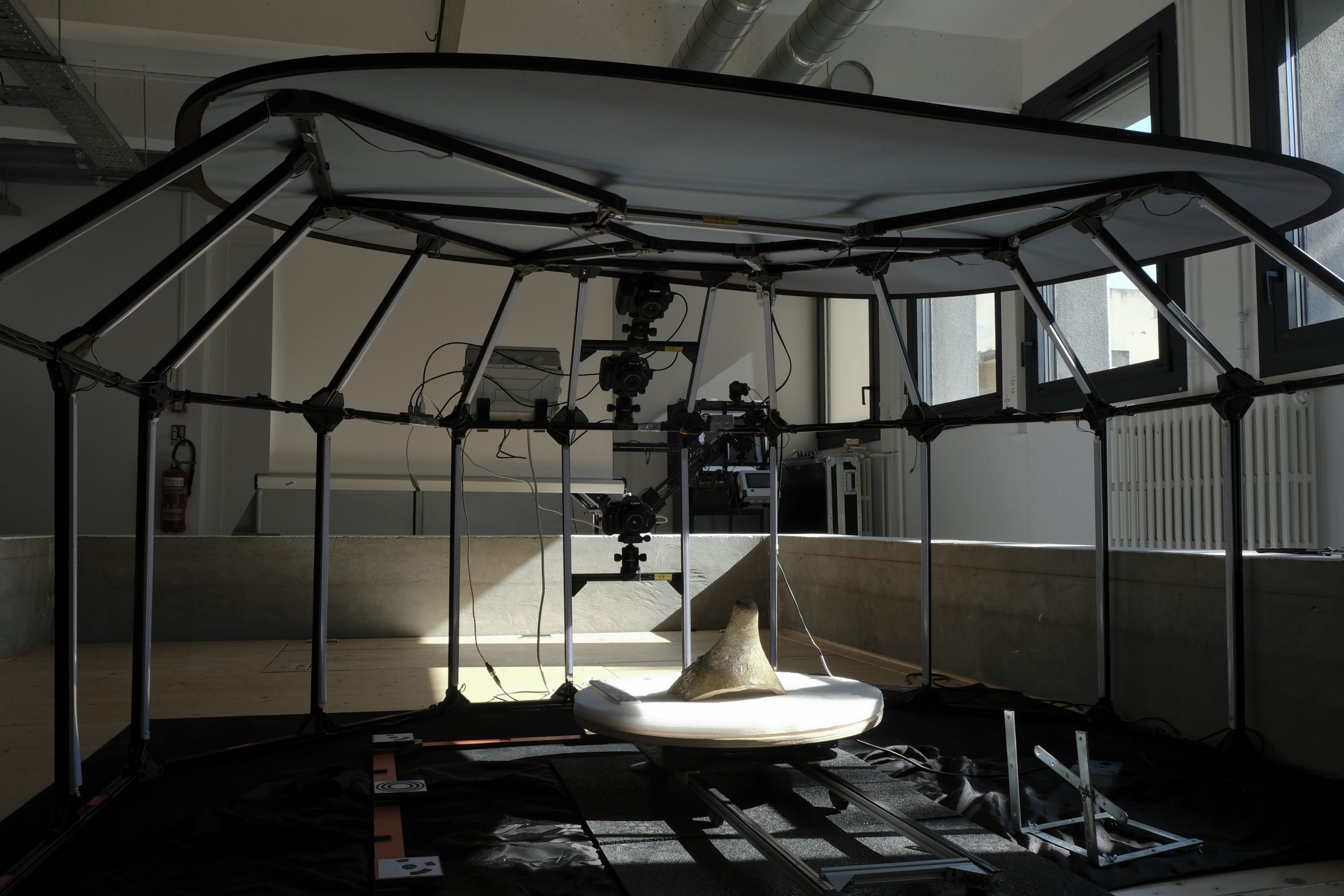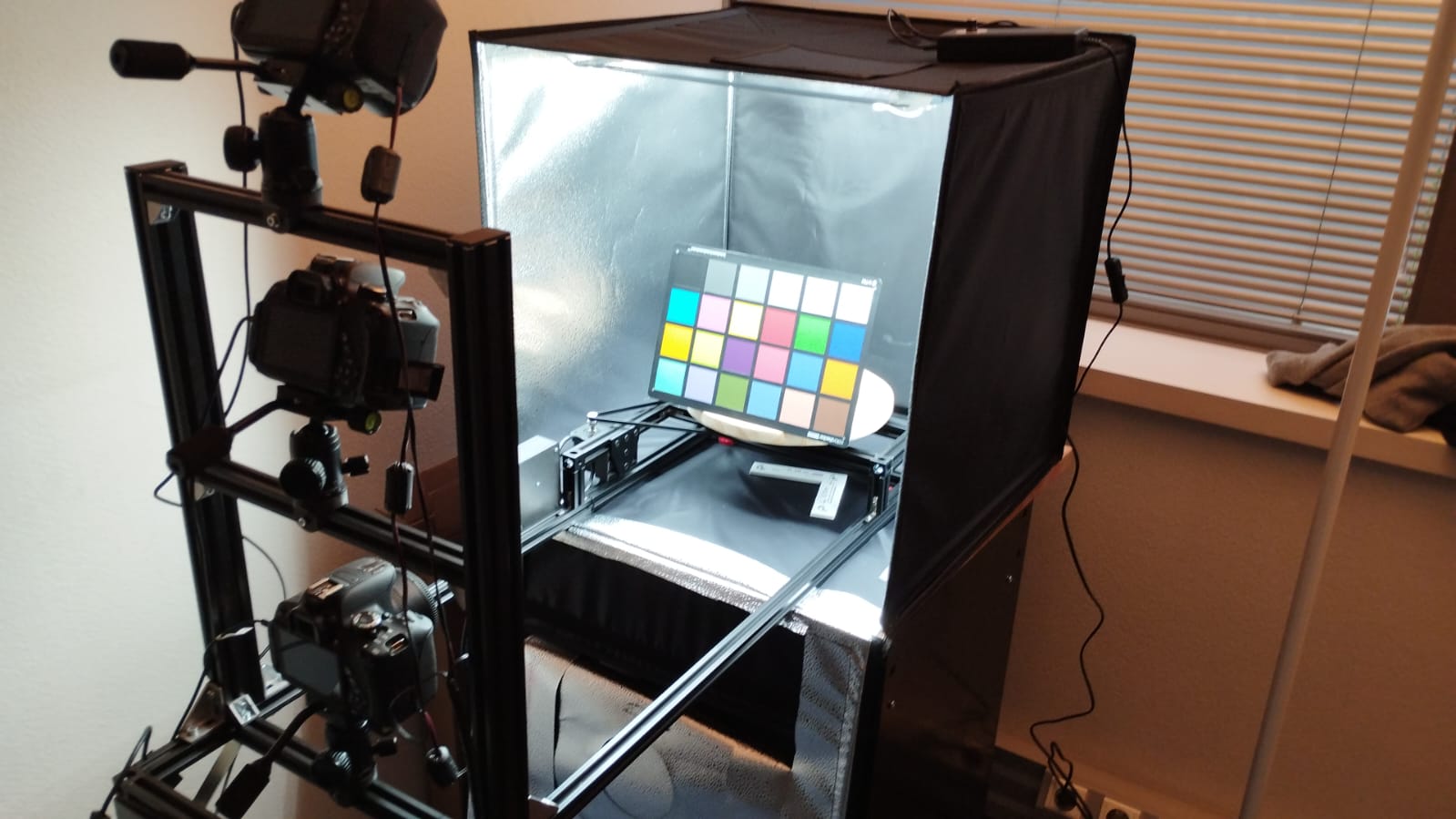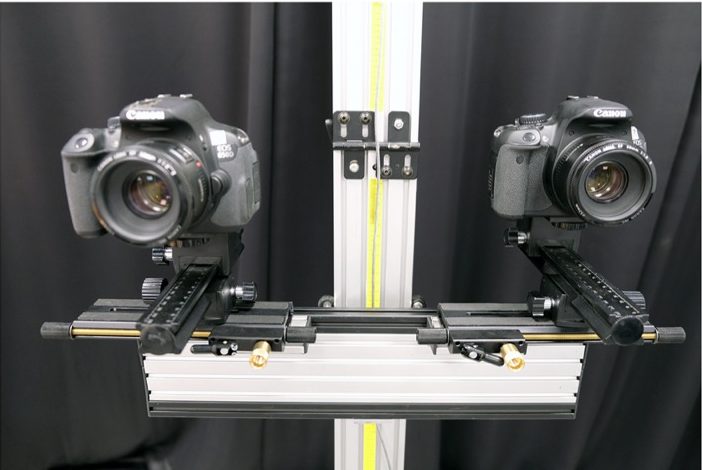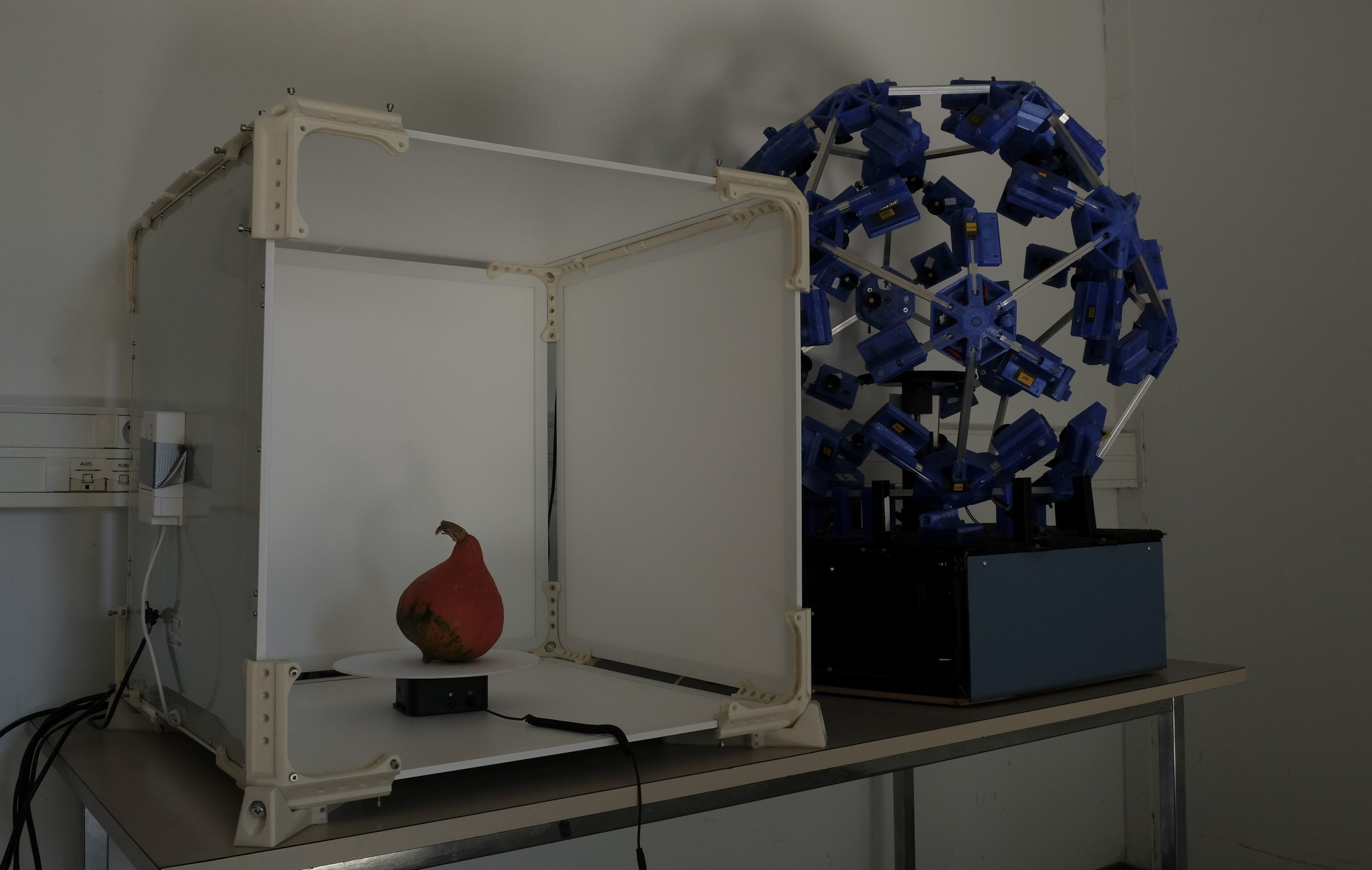After being used for the 3D digitization of more than 1,500 fragments from the remains of Notre-Dame Cathedral in Paris (1,084 fragments from the rood screen, 40 fragments from the oculus, 22 metal staples, 160 wood fragments, 300 dendrochronological slices, and 80 voussoirs from the transverse arch) over several months (2023-2025), the mass 3D scanning devices returned to the laboratory’s technical platform.
These custom-designed devices enable the quasi-automatic and, above all, reproducible 3D digitization of a number of objects with similar characteristics (shapes, dimensions, materials, etc.).
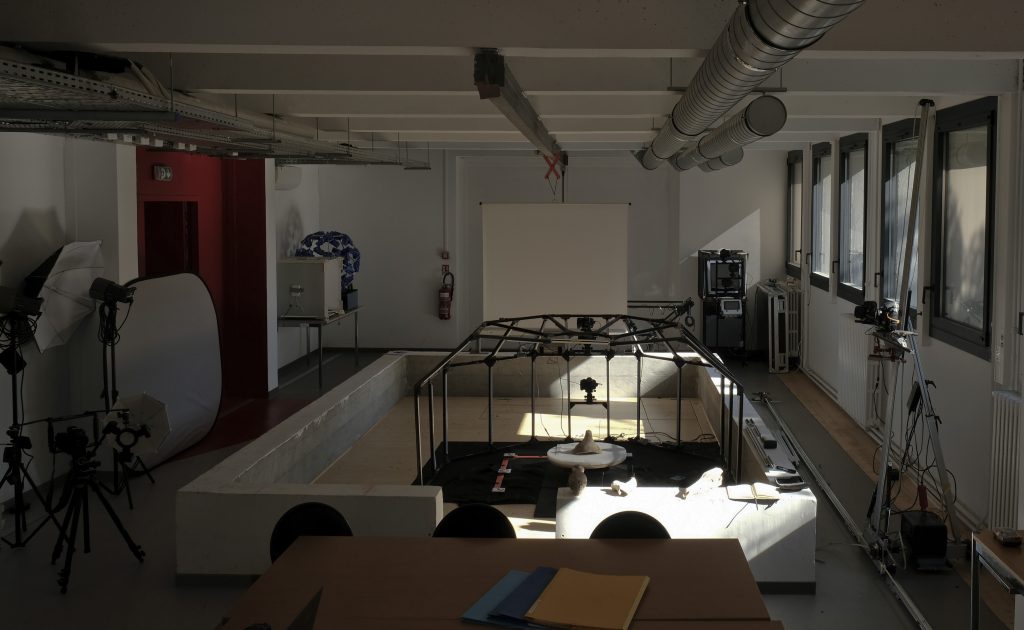
This equipment has been used for digitization operations undertaken as part of the Notre-Dame de Paris scientific project (CNRS/Ministry of Culture), and more specifically by the Wood and Metal working groups, as well as for the digitization of fragments of the rood screen (Jubé), supervised by the Collective Research Program (PCR) on the rood screen of Notre-Dame de Paris.
Some of these devices are currently being integrated into the E-RIHS catalog of service (European Research Infrastructure for Heritage Science) research infrastructure as MOLAB (MObile LABoratory) and FIXLAB (FIXed LABoratory) access points, so that they can become part of the ERIC’s shared services and may be accompanied by DIGILAB (DIGItal LABoratory).
These unique prototypes will be available for future calls for projects to digitize other collections.
Here is a detailed list of these devices:
Device No. 1:
Name: ARCH
Accessibility: MOLAB et FIXLAB
Description: Device composed of two parts, with three cameras on each side
Modularity: two possible configurations, in the form of a complete arch or a half-arch
Specificity: allows the digitization of oblong and longitudinal geometries
Example of application: scanning of the charred beam remains from Notre Dame collected by the Wood Working Group
Control: semi-automated
Design and production: Eloi Gattet (Mercurio)
Device No. 2:
Name: SPIDER
Accessibility: MOLAB et FIXLAB
Description: Four cameras and LED light strips for uniform lighting of the object and a turntable in the middle, fixed on rails.
Modularity: between two and four synchronized cameras, adaptable lights, number of images configurable via control box.
Specificity: designed to quickly digitize a medium-sized object.
Example of application: digitization of the voussoirs of the transverse arch of the nave of Notre-Dame de Paris
Control: automated
Design and production: Eloi Gattet (Mercurio)
Device No. 3:
Name: STUDIO
Accessibility: MOLAB et FIXLAB
Description: light box associated with a structure of 3 adjustable cameras coupled with an automated turntable
Modularity: up to 3 synchronized cameras, macro configuration and cross polarization
Specificity: photogrammetric acquisition of small objects
Example of application: digitization of archaeological fragments from the rood screen of Notre Dame
Control: automated
Design and production: Eloi Gattet (Mercurio)
Device No. 4
Name: CROSSBOW
Accessibility: MOLAB et FIXLAB
Description: a modular, motorized acquisition structure with two cameras that move automatically on two axes
Modularity: generation of a shooting matrix at different resolutions up to 2.75 m x 10 m (height x length)
Specific feature: multispectral photogrammetric acquisition of murals (frescoes, wall paintings) or other quasi-planar surfaces
Example of application: multispectral photogrammetric acquisition of Le Corbusier’s Starfish fresco in Roquebrune-Cap-Martin
Control: automated
Design and production: Odile Guillon (CICRP), Anthony Pamart (MAP), Eloi Gattet (Mercurio), and Michel Genevois
Device No. 4:
Name: PlixPlox
Accessibility: On request
Description: open-hardware light box composed of LED panels and 3D-printed parts coupled with an automated turntable
Modularity: between 1 and 5 LED panels
Specificity: photogrammetric acquisition of small objects
Example of application: collection of small artifacts or movable corpus
Control: Manual
Design and production: PlixPlox (Open Hardware) and Anthony Pamart (MAP)
